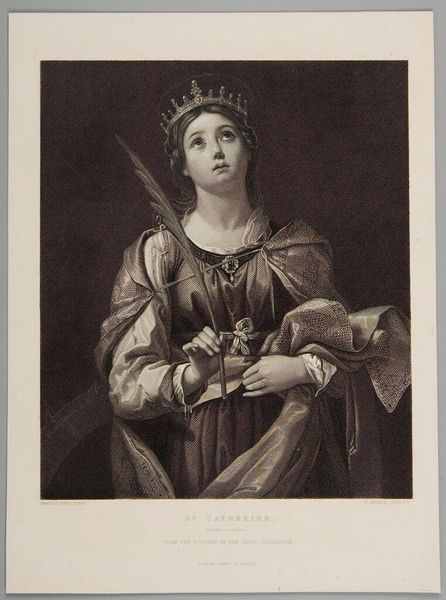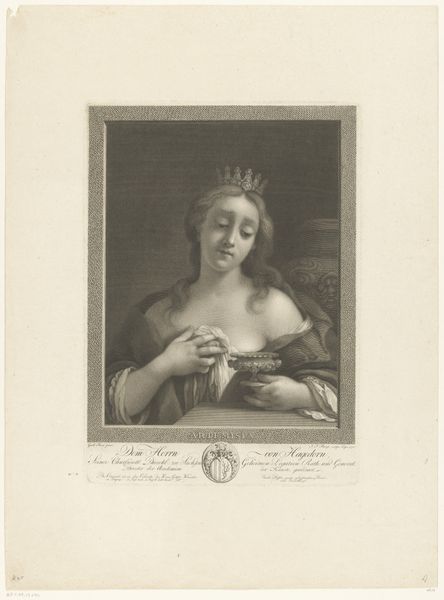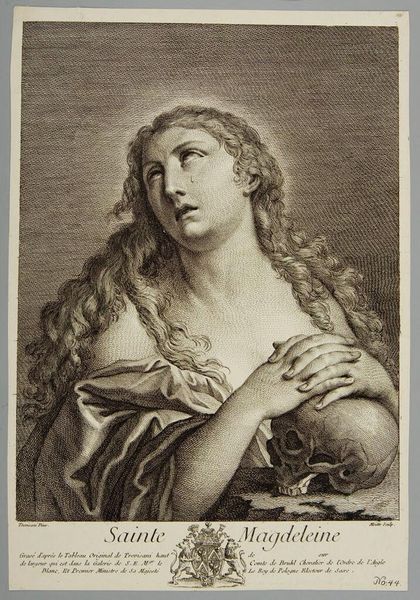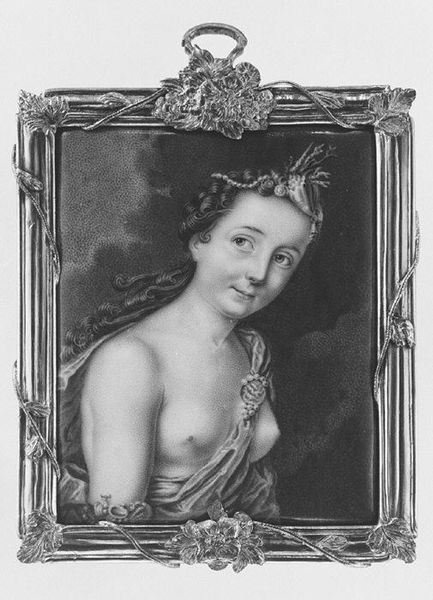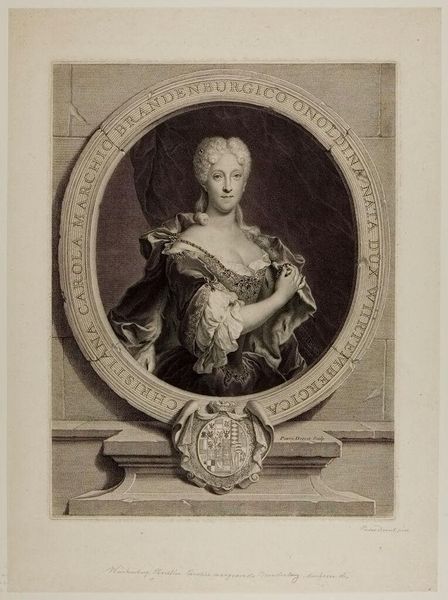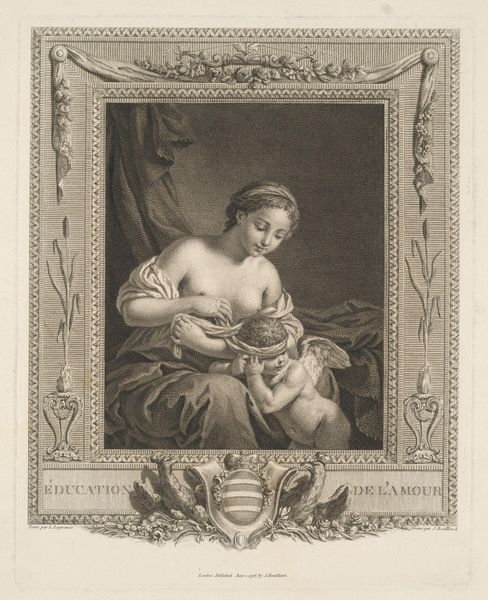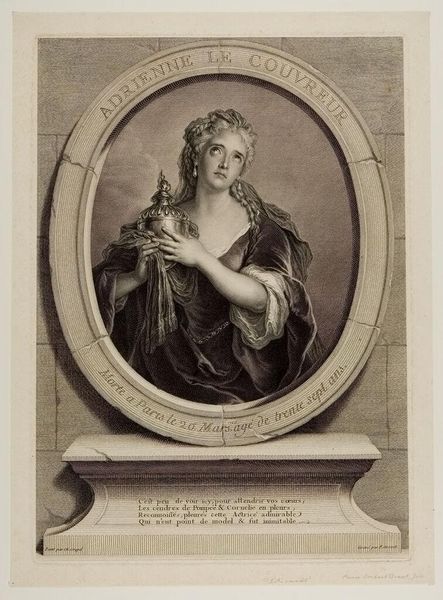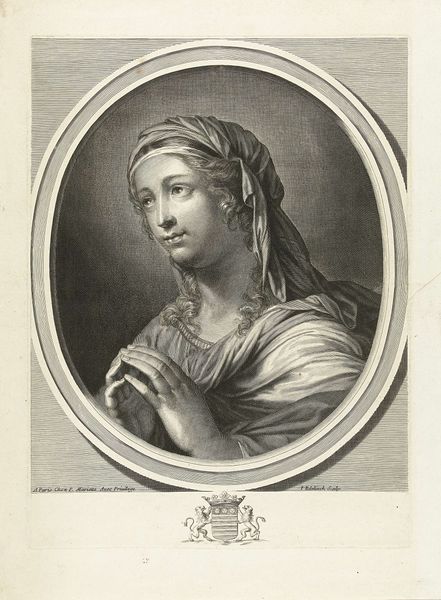
Copyright: CC0 1.0
Curator: Here we see Johann Friedrich Bause's "Artemisia," currently held at the Harvard Art Museums. Editor: The print possesses a melancholic air. The subject's gaze drifts downward, and the monochromatic palette adds to the overall gravity. Curator: It is indeed a thoughtful depiction, Artemisia was a queen renowned for her intelligence, and, tragically, for drinking the ashes of her husband. The cup she holds could allude to this practice. Editor: The artist's meticulous rendering of textures, from the soft drape of her clothing to the metallic sheen of the cup, adds a layer of sensory richness. The composition itself is cleverly arranged, directing our gaze through the subject's melancholic gaze. Curator: The image speaks to the ritualistic customs surrounding death and mourning in the 18th century, while Artemisia herself is a potent symbol of female power and grief. Editor: Looking at the interplay of light and shadow, I'm reminded how graphic arts of this era were deeply concerned with the contrast and play between different artistic components. Curator: An apt point; in the end, perhaps this piece reminds us of how symbols and formal elements together weave stories that linger through time. Editor: I agree. It's an evocative work, offering layers of meaning through both its style and historical references.
Comments
No comments
Be the first to comment and join the conversation on the ultimate creative platform.
